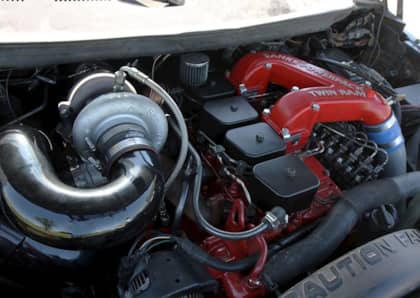An In-Tank Electric Fuel Pump is What Your LS Swap Needs
If you are here, you’re probably considering upgrading your fuel system. Or maybe the photo of my classic Cadillac caught your attention. Either way, you’ve come to the right place. But first, let’s take a look at how a mechanical vs. an electric fuel pump functions and weigh the pros and cons of each.
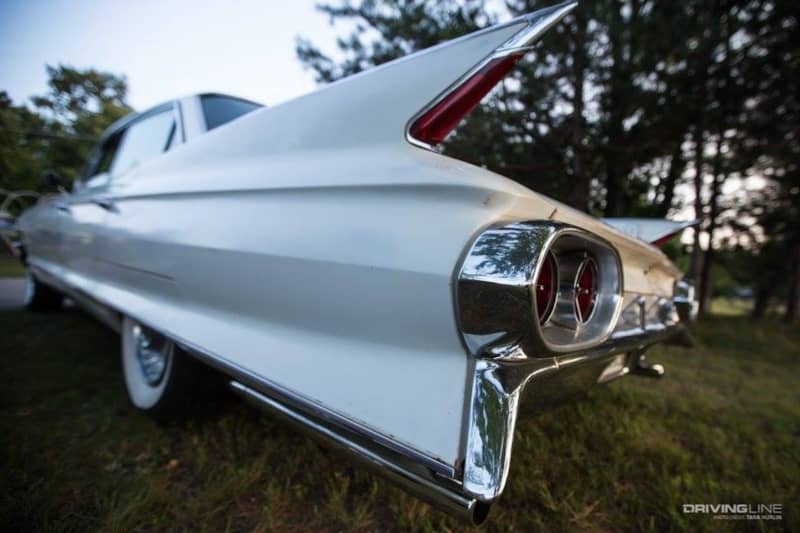
Mechanical Fuel Pump Shortcomings
Mechanically-driven fuel pumps are typically found in pre-1980 cars. These pumps are bolted to the engine block or head, and a lobe on the engine's camshaft operates a lever on the pump. The pump's flexible diaphragm then encloses a specific volume of fuel on one side. This was common fuel pump functionality in older vehicles until technology advanced from carbureted vehicles to fuel-injection. The apparent advantages of a mechanical pump are they don't require any additional wiring or plumbing and they operate quietly. Unfortunately, most mechanical pumps can't keep up with modern performance modifications.
Electric In-Tank Fuel Pump
Fuel-injected engines operate best with a higher fuel pressure than what the mechanical fuel pumps can offer because they are forcing fuel through injectors in order to better atomize fuel. Aside from being more powerful, the electric fuel pumps are generally safer, especially when installed inside the gas tank. Why? First of all, it’s less likely to start a fire. Liquid fuel will not explode, and by submerging the pump in the tank, you eliminate the chance of vapors escaping and a fire starting. An in-tank pump setup also self-cools in the surrounding fuel and has easy access to the steady supply of gasoline that it needs. It's less likely to run dry and burn itself up in comparison to an external electric pump. Plus, an internal pump creates positive pressure in the fuel lines, which helps push the gasoline to the engine.
There are several reasons why someone would consider upgrading their old fuel pump to an electric in-tank pump. Perhaps you have a classic car with a mechanical pump, but the engine could use more fuel force. Or maybe you’re switching from a carbureted setup to fuel injection. Or perhaps you are just here hoping for pretty pictures of a classic Cadillac. Don't worry; I'll supply that for you here, too, so keep scrolling.
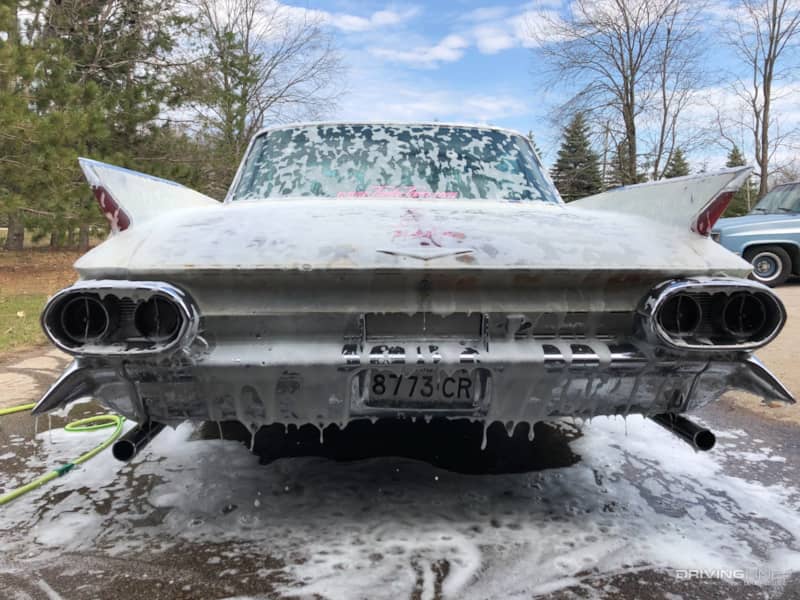
LS1 Swap
In my case, I was forced to swap the engine in my 1961 Cadillac Series 62. Its original 390 V8 punched a hole through itself and left a billowing cloud of blue-black smoke behind. I’ll leave the rebuild vs. engine swap debate out of this article and cut to the chase, but I will say this: yep, I swapped it with an LS1 engine. It was cheaper, gained the car almost 20-mpg, and accomplished my goal of making the old school Cadillac into a reliable cruiser. But I still wasn't quite satisfied. Instead of putting the extra effort in during the swap, I saved some time and expense and opted for an external electric fuel pump. I almost immediately regretted it.
External Fuel Pump Woes
The external fuel pump's annoying whirring hum was unbearable, considering that, in my mind, a Cadillac should run smooth and quiet, excepting its harmonic exhaust notes. Gone would be the days of feeling a flash of embarrassment as the pump sent unmuffled cries through the car show grounds with the turn of the key. It was time to stifle the pump by submerging it in the fuel tank.
Prepping for In-Tank Pump Installation
The first step, of course, was jacking the car up on flat ground and placing a jack stand at all four corners. After unhooking the old fuel pump lines and electrical connections, I drained the tank, which was made easy by Cadillac's well thought-out drain plug. Before disconnecting the fill tube, I placed a jack stand under the gas tank for support and then unbolted the tank straps to lower the tank. (Reminder: Don’t forget your safety glasses, even when just removing old parts. Junk may still manage to weave around them, but at least the glasses might give you a moment to flinch and save yourself from crying over old dirt and tetanus).
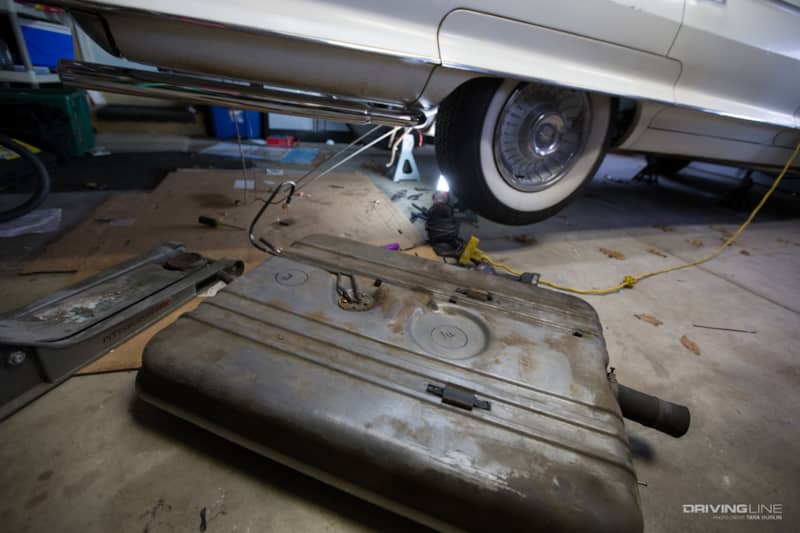
In-Tank Fuel Pump Details
Before I go on, let’s talk about the new pump. There are several in-tank fuel pumps available for various applications, from vehicle-specific drop-in tanks with pre-plumbed pumps to DIY setups from companies like Aeromotive and Holley. Different pump sizes can be had based on your horsepower goals and fuel needs. After much in-depth research, it was clear that the Holley Sniper EFI fuel pump module kit was the answer for me. It is adjustable enough to feed the engine from my Cadillac’s unusually shallow pan.
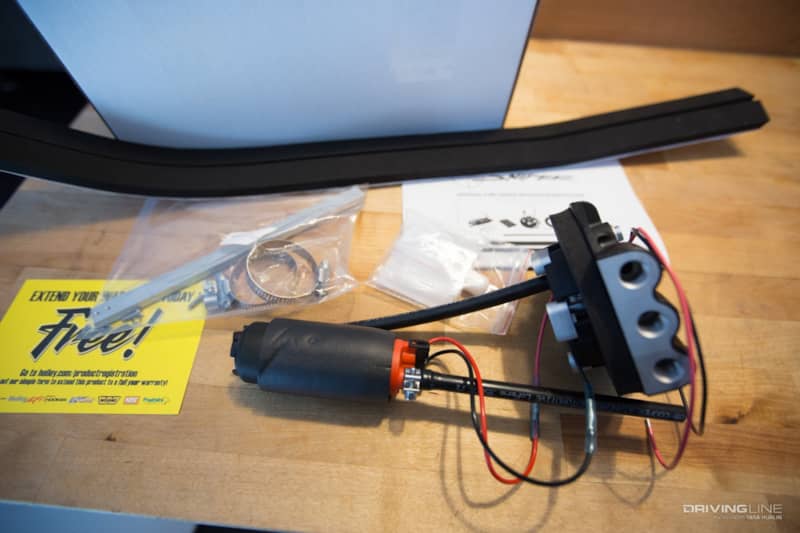
Safely Modifying the Gas Tank
The install didn’t go without some modification. A 3.5” hole was cut into the top of the tank. Cadillac already had a perfect landing spot stamped into the tank.
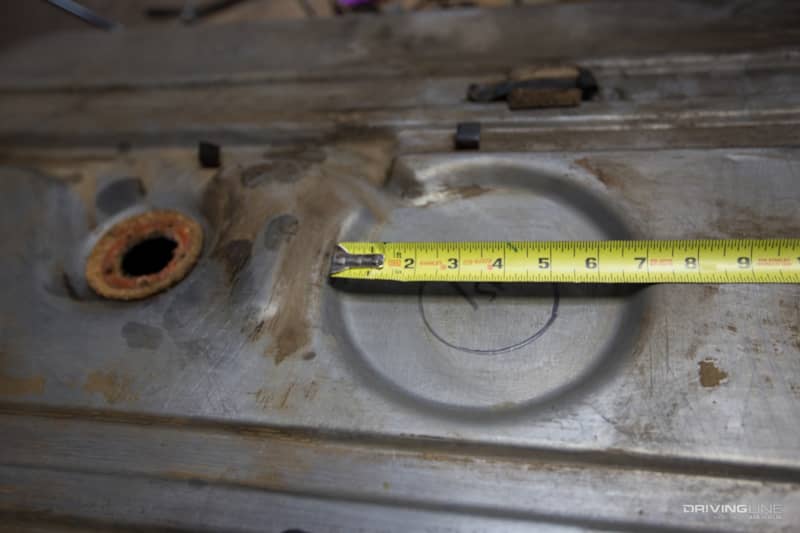
Measuring was easy, but cutting the vaporous container is risky. In an attempt to alleviate the risk, I flushed the tank with water several times and let it air out for a few weeks before drilling a pilot hole, then cutting the perfect circle with a hole saw. After the cuts were made, any rough edges were filed down.
Unless you have an unusually shallow fuel tank, you likely will not have to worry about this modification. Before officially installing the fuel pump, I had to shorten the pump’s pickup hose and minimize the mounting bracket to fit my Cadillac's short 5.25" tall fuel tank.
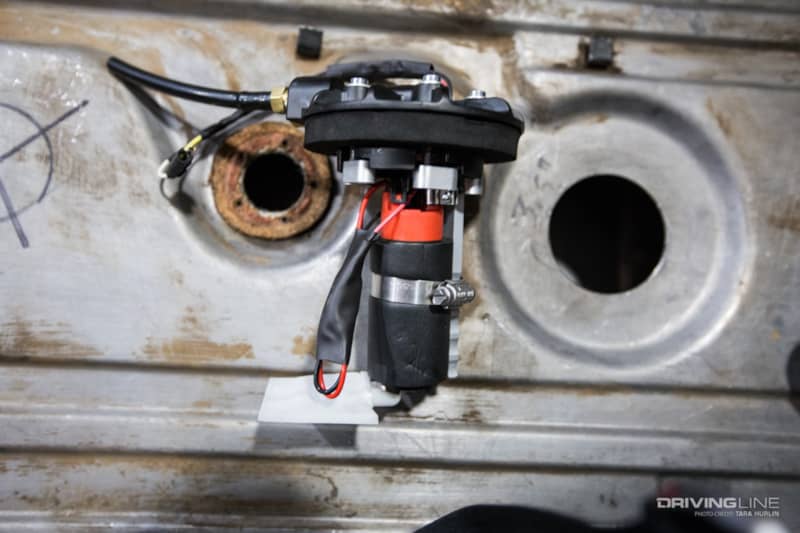
The modifications brought the pump's overall height to six-inches. If you’re paying attention, you’ll notice that the pump was still too tall for this application. A custom half-inch cylindrical aluminum spacer was used on the top of the tank to add just enough height for the fuel pump to rest comfortably inside.
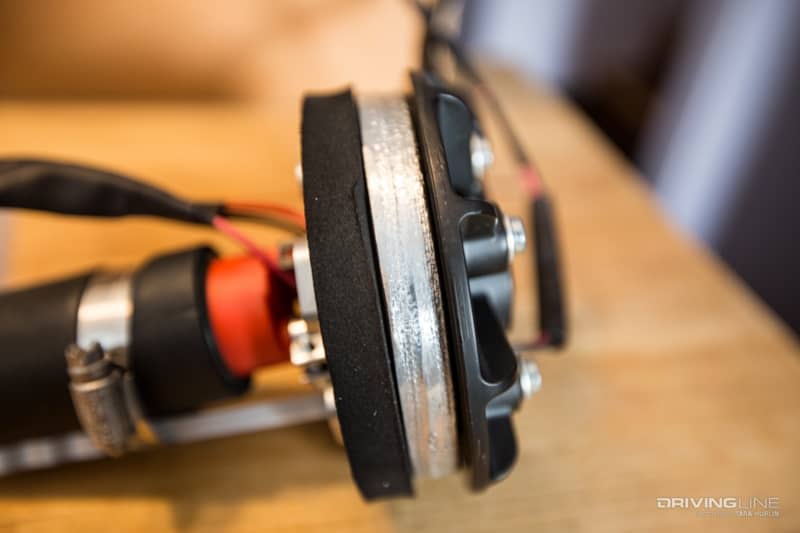
The old lines were cut, crimped and soldered shut.
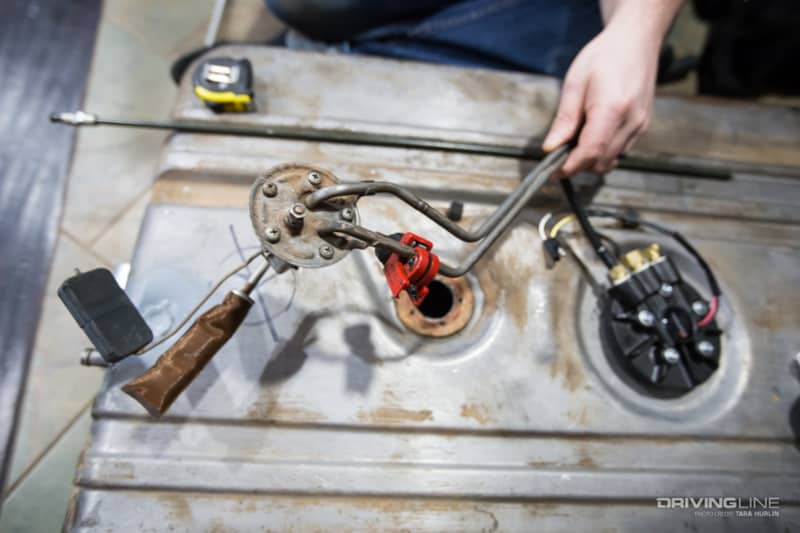
The pump's housing has ¼” NPT fittings, but adapters and strategically bent 3/8" hard line flared with a GM quick-disconnect flare outlet was a simple solution. The return line is 5/16" brake tube that was flared to accept GM's quick-disconnect fitting.
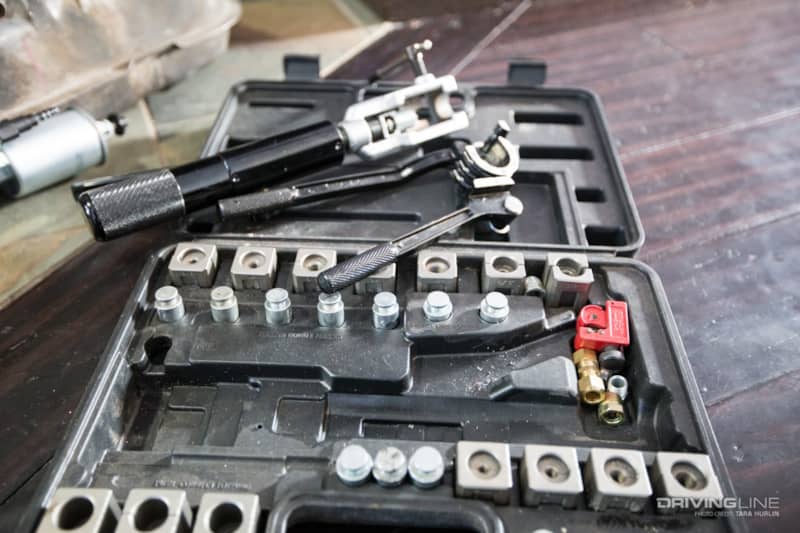
With the fuel pump bolted into the tank, running the wiring and hardlines were the next steps. The most budget-friendly option for the connector was a two-pin trailer plug from the hardware store, with a two-wire Weather Pack connector being a nicer option.
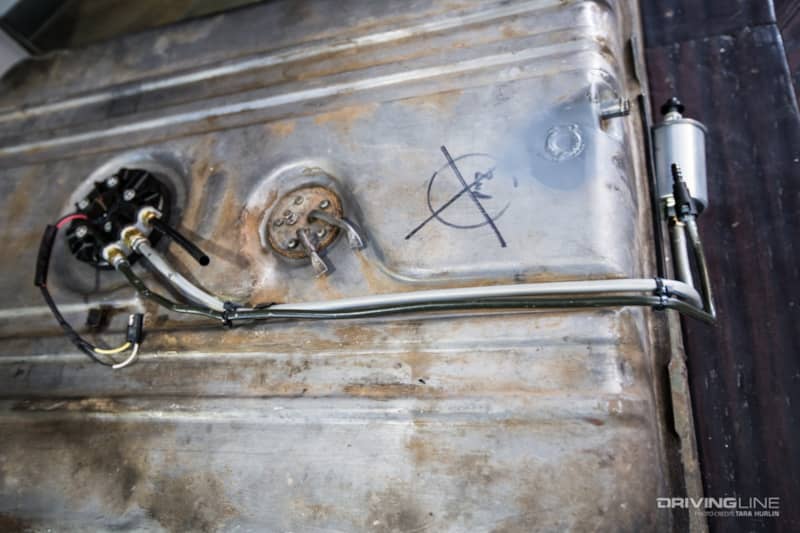
I ran the new power wire through the trunk and down and out to the pump location, simply following the wires for the factory fuel tank sending unit, and then secured the ground with several other ground wires located near the rear bumper mounts.
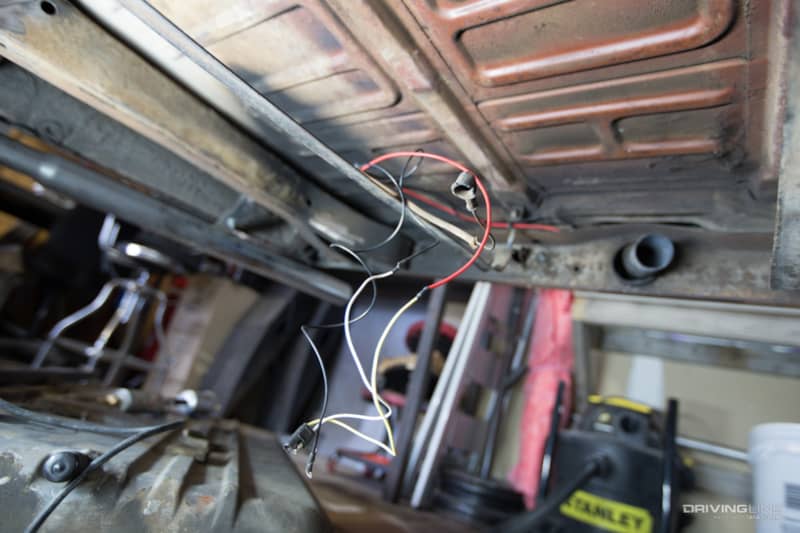
Before reinstalling the tank, I had to ensure the top of the fuel pump wouldn't rub on the bottom of the trunk. Quarter-inch spacers were made from spare thick foam gasket material, and then placed on top the tank, one strip on each side. The straps were reinstalled and the bolts extended to accommodate the spacers.
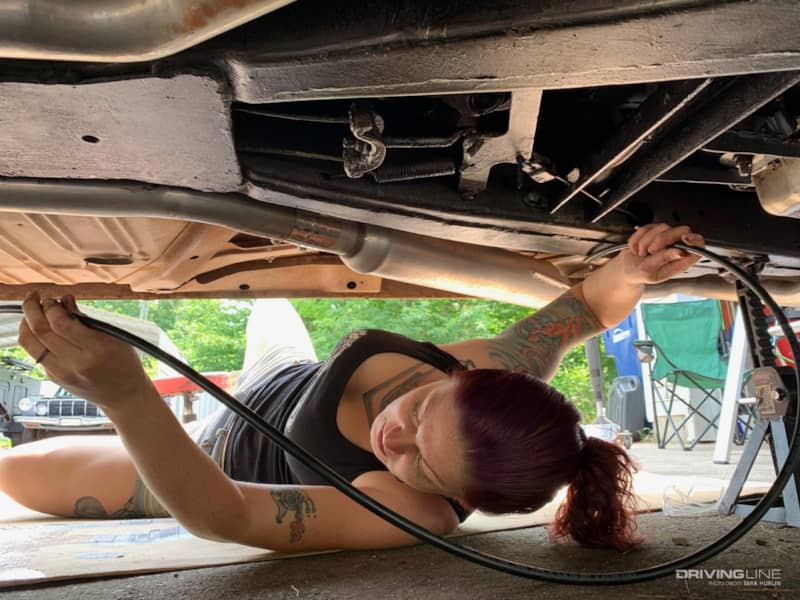
With the tank bolted back up, it was time to link new fuel lines to the engine. Dorman Products’ nylon fuel lines from JEGS replaced the old metal lines, with 3/8” tube for the outlet and 5/16” for the return. The lines run back along the body and frame and are secured with cushioned hose clamps that are riveted to the frame to protect them from heat and moving parts.
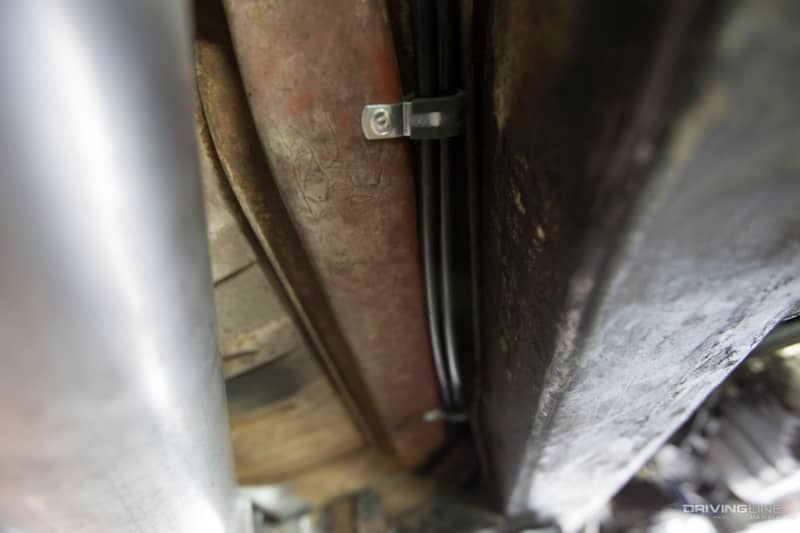
Dorman Products' GM quick-disconnect fittings connect the engine to the fuel rail and return lines, and the lines to the fitting on the fuel pump. Installing the quick-disconnect fittings will make future servicing of the fuel system easier.
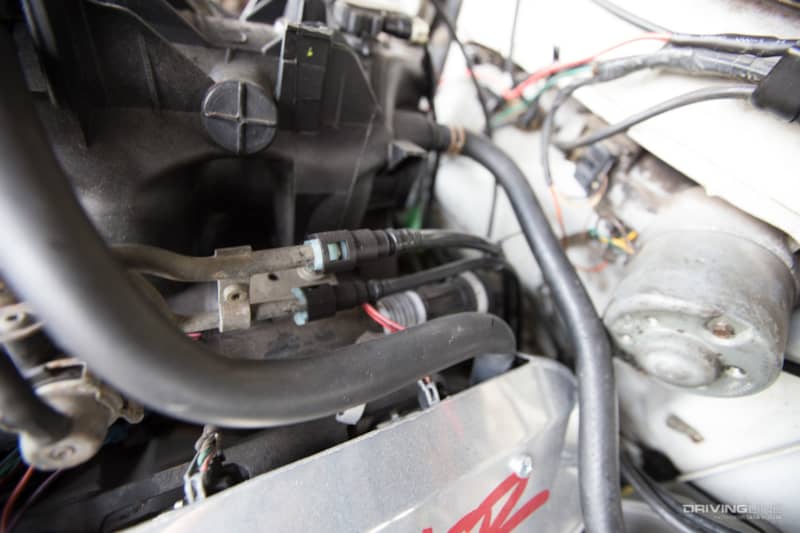
The next step? I crossed my fingers and tested it. Three gallons of gas was added to the tank to prime the system. There were no initial leaks!
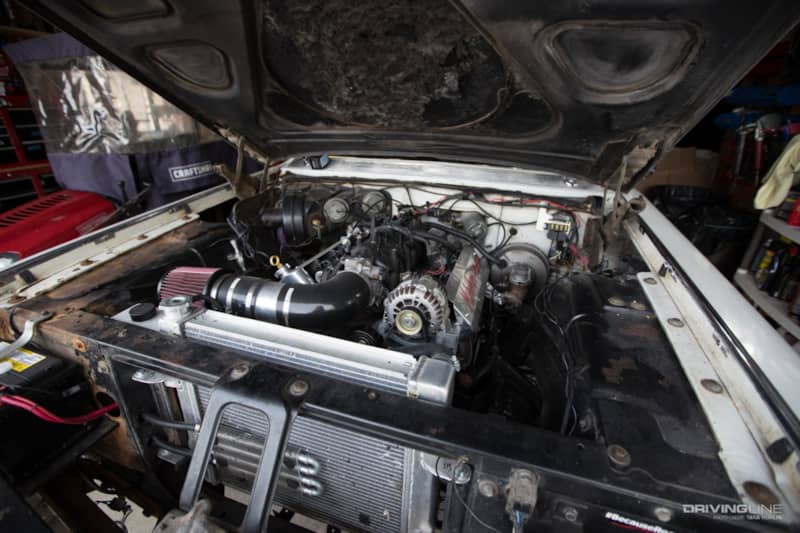
I crossed my toes before starting the engine. Still no leaks! But five minutes later, a few drops of fuel escaped from the outlet fitting at the pump housing. I dropped the tank from the car again, tightened the fitting and reinstalled the tank. Success! Even the fuel sending unit worked with the Cadillac's stock gauge after more fuel was added.
Installation Success
Now, when I start up my beautiful Marilyn at car meets, she no longer moans like a hippo in heat. I can turn the key with pride knowing that all I'll hear is the purring engine and the exhaust notes flowing through her long bellflowers. Maybe I should hop-up the LS a bit next. Projects are never finished, am I right?
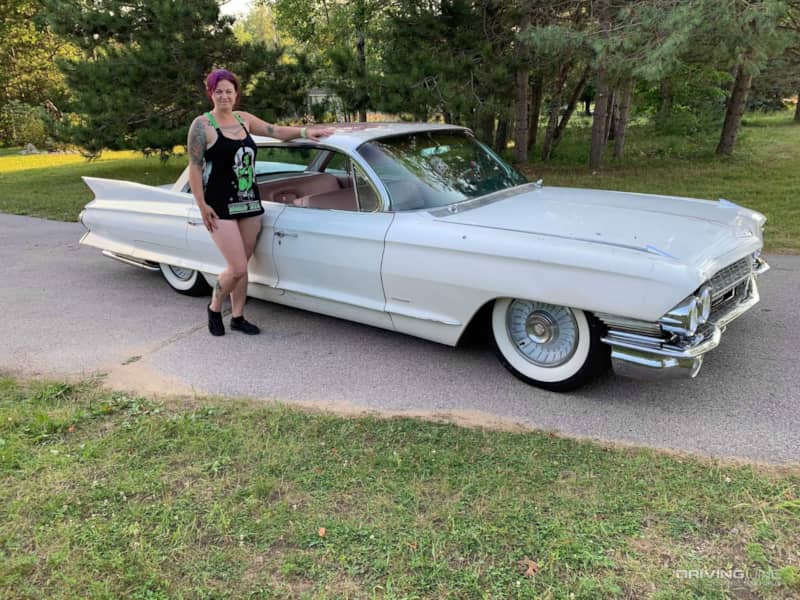
Is an engine swap in your near future? Get back to the basics before heading back to the garage.




